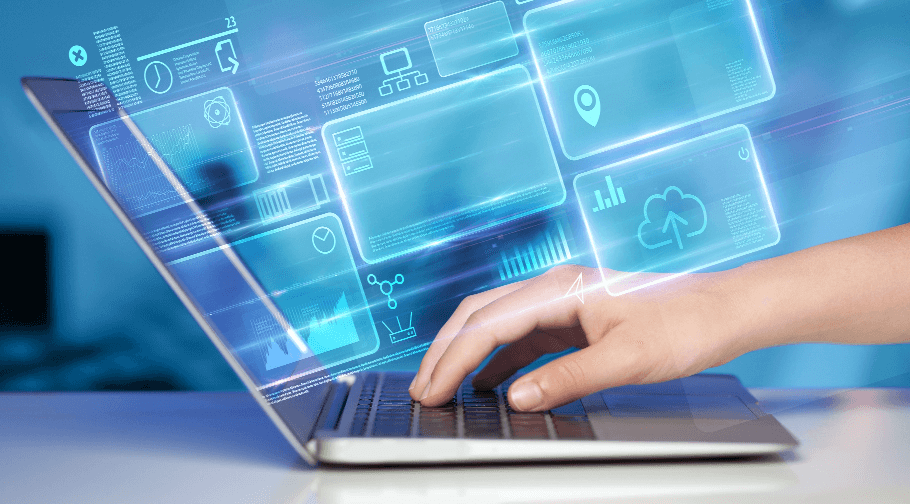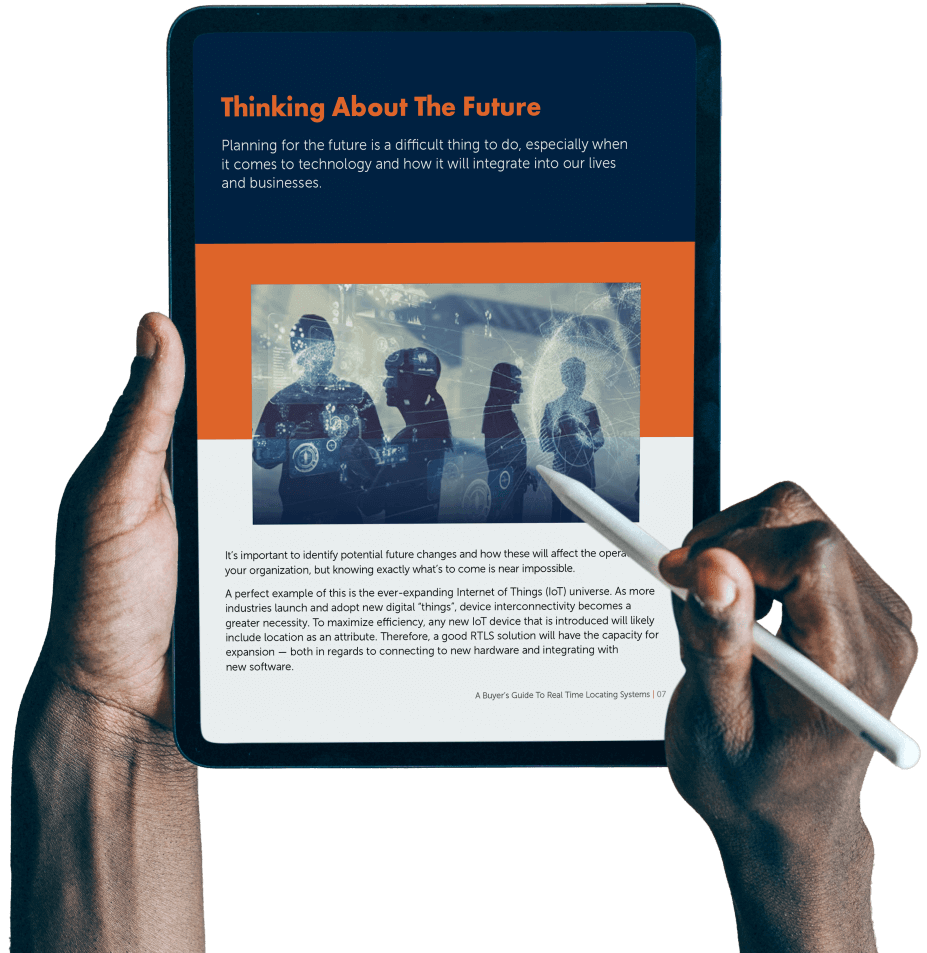Understand real time location systems
Not entirely clear on what RTLS means or does? If you’re not familiar with RTLS connectivity solutions, such as WiFi, Bluetooth® Low Energy (BLE) or wireless network infrastructures, then you’re in the right place.
In this buyer’s guide we break down exactly what a real time location system is so you can get a full picture of the different types of RTLS technologies and how they work together to create an effective RTLS solution that can benefit your organization.
Here are some of the things our guide delves into:
- How real time tracking works.
- How passive and active RFID technology is used.
- The difference between an RTLS tag and an RFID tag.
- How location data is received with RTLS.
- Networking BLE tags with anchors and sensors.
- The importance of location accuracy, and what technologies offer the best results.
"*" indicates required fields

Explore the applications of RTLS solutions
RTLS can be used for many different purposes. Some will be relevant to your business, some may not be. But getting a full understanding of the capabilities this technology has will mean you can make a well-informed decision about what you need versus what would only be “nice to have”.
Find out more about how RTLS can be used for:
- Asset management to ensure optimal equipment maintenance and inventory control.
- Equipment location tracking to identify optimal distribution and usage patterns.
- Patient/customer flow to identify bottlenecks and optimize their experience..
- Staff safety, whether it’s in a healthcare facility, corrections systems or smart factory.
Find the right RTLS solutions for different industries
Many industries can benefit from the implementation of an RTLS solution, but each will need different types of technology to be used in a variety of ways to fully make use of the asset management, tracking and safety benefits these solutions can offer.
For instance, responsive tracking tags with additional features may be used to ensure healthcare staff and patient safety. A smart factory, on the other hand, could benefit more from asset tracking tags with active RFID technology that allows each piece of equipment to be logged and located easily for regularly scheduled preventive maintenance.
Larger outdoor operations, like in the logging industry, will require different types of location service, such as GPS or radar. These offer broader areas of tracking, but will sacrifice the accuracy of some indoor RTLS solutions, like BLE tags — which use WiFi to connect to a sensor network for much greater location precision.
As you can see, there are many ways that RTLS can be used across industries to enhance operational efficiency. Here are some of the most common examples:

Healthcare
- Patient location tracking and distress alerts (i.e., for falls or injuries).
- Medical equipment location tracking, maintenance planning, recording and scheduling.
- Staff location tracking and duress alerts.
- Asset management, including allocation and distribution.

Manufacturing and warehouse
- Equipment location tracking, allocation and distribution.
- Asset maintenance management.
- Staff safety through location tracking.

Consumables industries
(e.g., food and medical)
- Temperature monitoring.
- Stock level recording and alerts.
Use our guide to identify exactly what operational needs you have, and what features of an RTLS solution will best fit your organization to resolve them.
A complete guide to finding your ideal RTLS solution
RTLS can be used for many different purposes. Some will be relevant to your business, some may not be. But getting a full understanding of the capabilities this technology has will mean you can make a well-informed decision about what you need versus what would only be “nice to have”.
Find out more about how RTLS can be used for:
- Asset management to ensure optimal equipment maintenance and inventory control.
- Equipment location tracking to identify optimal distribution and usage patterns.
- Patient/customer flow to identify bottlenecks and optimize their experience..
- Staff safety, whether it’s in a healthcare facility, corrections systems or smart factory.


